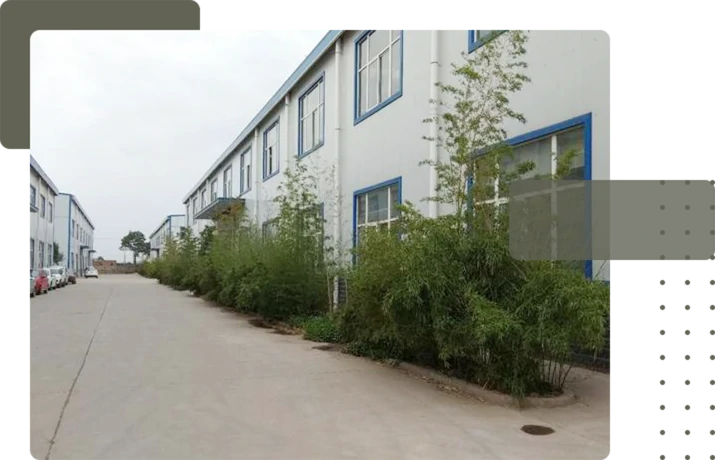cast iron
Exploring the Wonders of Cast Iron A Timeless Material
Cast iron is a remarkable material that has stood the test of time, prized for its durability, versatility, and excellent heat retention properties. Originating in ancient China around the 5th century BC, cast iron has evolved over the centuries and found its place in various applications, ranging from cookware to architectural elements. Its unique properties make it a favorite among artisans and engineers alike.
At its core, cast iron is created by melting iron and allowing it to solidify in a mold. The process may seem simple, but it requires careful control of temperature and the composition of the metal. The addition of carbon, typically between 2% and 4%, is what distinguishes cast iron from other types of iron. This carbon content is crucial as it not only enhances the material's hardness but also influences its casting properties, allowing for intricate designs that would be challenging to achieve with solid iron.
One of the most well-known applications of cast iron is in cookware, particularly in the form of frying pans, Dutch ovens, and skillets. Cast iron cookware is celebrated for its ability to retain heat exceptionally well, making it ideal for searing meat or baking bread. When seasoned properly, cast iron develops a natural non-stick surface that enhances its cooking performance, making dishes more flavorful and easier to prepare.
Furthermore, the longevity of cast iron cookware is unmatched. With proper care, a cast iron skillet can last for generations, often improving with age. The patina built over time adds character while improving cooking efficiency. This durability is reflected in the growing trend of using vintage cast iron cookware, as many enthusiasts appreciate the history and craftsmanship behind these timeless pieces.
cast iron

Beyond the kitchen, cast iron plays a significant role in construction and engineering. Its strength and durability make it an ideal choice for structural components, such as beams and columns. Cast iron is also a popular material for decorative fencing, gates, and furniture due to its ability to be molded into intricate shapes and designs. Architectural features like cast iron railings and columns can be found in many historic buildings, showcasing the material's adaptability and aesthetic appeal.
The environmental benefits of cast iron are also noteworthy. As a recyclable material, cast iron can be melted down and repurposed, reducing waste and promoting sustainability. The manufacturing process has evolved to adopt more eco-friendly practices, further solidifying cast iron’s status as a responsible choice in a world increasingly concerned about environmental impact.
Despite its many advantages, cast iron does come with certain challenges. For instance, it is prone to rust if not properly maintained, requiring regular seasoning and care. Additionally, its weight can be a drawback, especially in cookware, where some users might prefer lighter alternatives. However, these factors often pale in comparison to the numerous benefits cast iron offers.
As we move forward in an era of innovation and technology, cast iron remains relevant and celebrated. Whether it’s the comfort of a well-loved skillet on a family dinner table or the imposing presence of cast iron architecture in our cities, this material continues to inspire and impress. From chefs to architects, cast iron is a testament to the fusion of functionality and artistry.
In conclusion, cast iron is much more than just a material; it’s an emblem of tradition, utility, and resilience. Its enduring nature ensures that it remains an essential choice in a variety of applications, bridging the gap between past and present. As we embrace new trends and technologies, it’s heartening to know that something as timeless as cast iron continues to thrive, enriching our lives with its unique qualities. Whether you’re cooking, constructing, or simply appreciating its beauty, cast iron is undeniably an integral part of our cultural and functional heritage.
-
Wrought Iron Components: Timeless Elegance and Structural StrengthNewsJul.28,2025
-
Window Hardware Essentials: Rollers, Handles, and Locking SolutionsNewsJul.28,2025
-
Small Agricultural Processing Machines: Corn Threshers, Cassava Chippers, Grain Peelers & Chaff CuttersNewsJul.28,2025
-
Sliding Rollers: Smooth, Silent, and Built to LastNewsJul.28,2025
-
Cast Iron Stoves: Timeless Heating with Modern EfficiencyNewsJul.28,2025
-
Cast Iron Pipe and Fitting: Durable, Fire-Resistant Solutions for Plumbing and DrainageNewsJul.28,2025
-
 Wrought Iron Components: Timeless Elegance and Structural StrengthJul-28-2025Wrought Iron Components: Timeless Elegance and Structural Strength
Wrought Iron Components: Timeless Elegance and Structural StrengthJul-28-2025Wrought Iron Components: Timeless Elegance and Structural Strength -
 Window Hardware Essentials: Rollers, Handles, and Locking SolutionsJul-28-2025Window Hardware Essentials: Rollers, Handles, and Locking Solutions
Window Hardware Essentials: Rollers, Handles, and Locking SolutionsJul-28-2025Window Hardware Essentials: Rollers, Handles, and Locking Solutions -
 Small Agricultural Processing Machines: Corn Threshers, Cassava Chippers, Grain Peelers & Chaff CuttersJul-28-2025Small Agricultural Processing Machines: Corn Threshers, Cassava Chippers, Grain Peelers & Chaff Cutters
Small Agricultural Processing Machines: Corn Threshers, Cassava Chippers, Grain Peelers & Chaff CuttersJul-28-2025Small Agricultural Processing Machines: Corn Threshers, Cassava Chippers, Grain Peelers & Chaff Cutters












